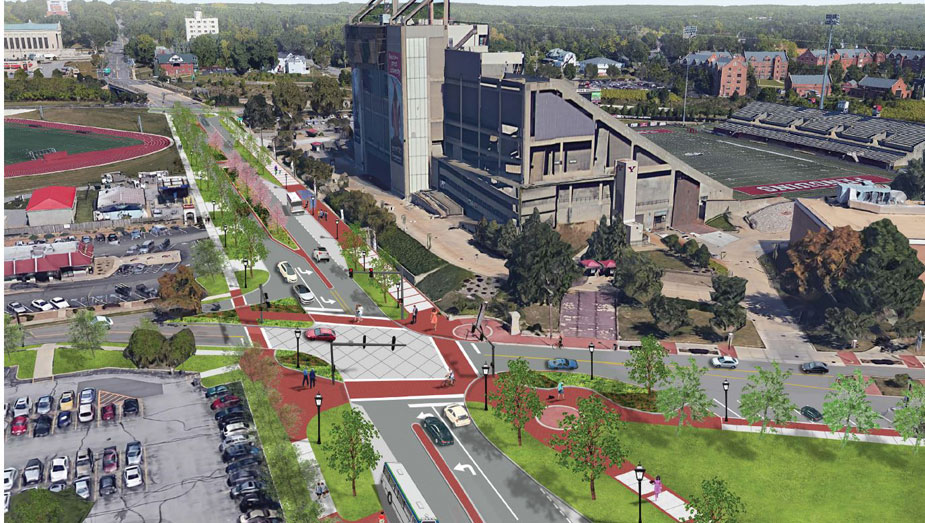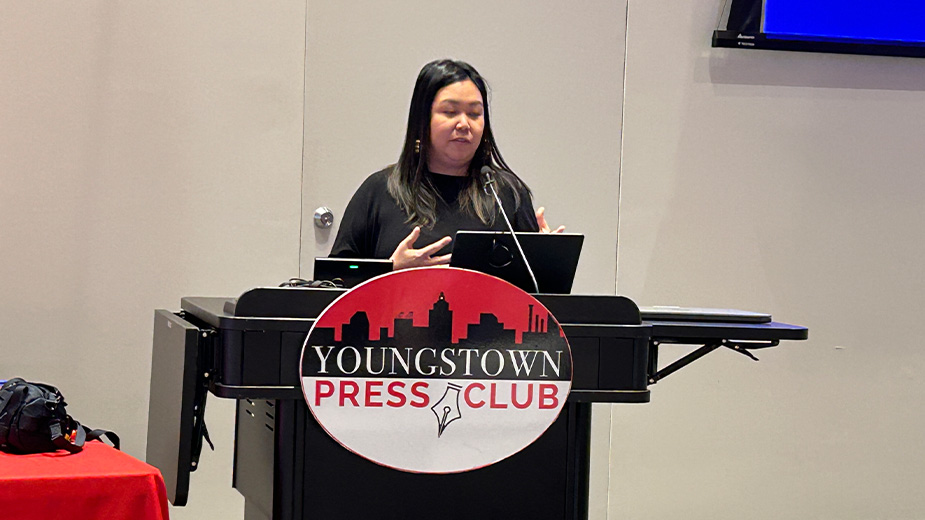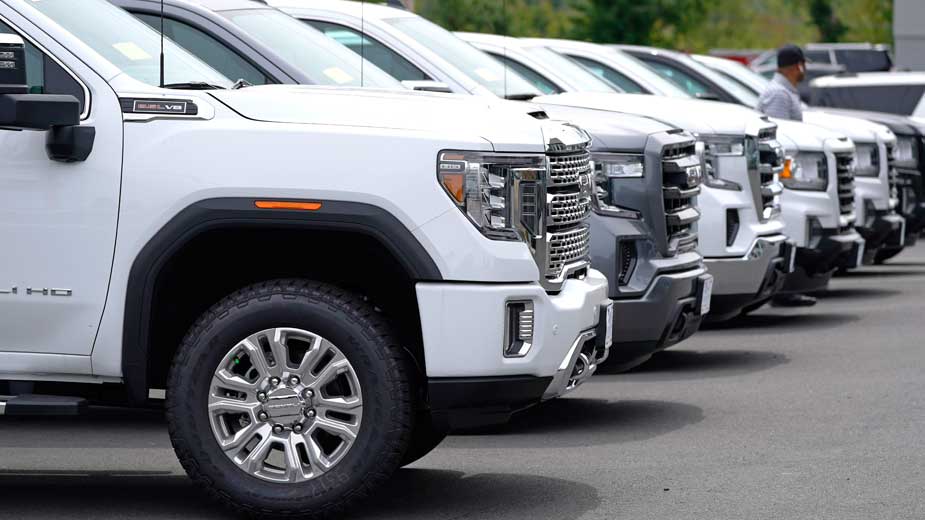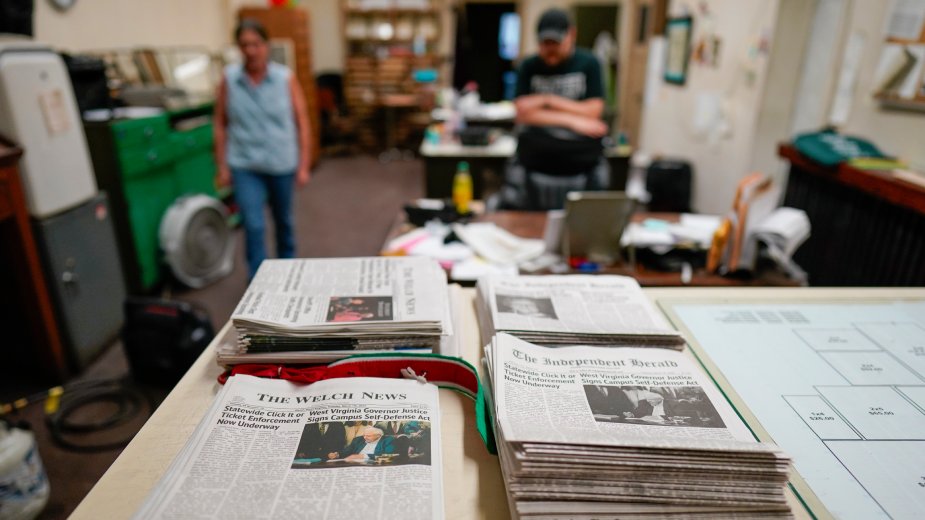Autonomous Vehicles Drive Forward in Youngstown
YOUNGSTOWN, Ohio – Bringing autonomous vehicle technology to the city will rapidly advance the city’s revitalization efforts, said Jim Kinnick, executive director of Eastgate Regional Council of Governments.
“What we’re talking about today is embracing this technology,” he said. “The technology is coming whether you want it or not, and we want to be a part of it and we want to be a part of it as a community.”
Kinnick made his remarks at Technology Takes the Wheel, one in a series of free seminars that began Wednesday at Williamson Hall on the campus of Youngstown State University. The seminars are co-sponsored by DriveOhio, the YSU College of Science, Technology, Engineering and Mathematics, AAA East Central and Eastgate. During the event, a 2020 Buick Envision converted to an autonomous vehicle was on display outside Williamson Hall for demonstration, courtesy of Sweeney Chevrolet Buick GMC.
“We’re mindful of where this is going and what the limits are, specifically the service department and where they’re going and how we train that next generation of technicians,” said Alexa Sweeney Blackann, vice president of the Sweeney dealerships.
Autonomous vehicles are becoming Youngstown’s hallmark in addition to additive manufacturing, electronics and electric vehicles, said Michael Hripko, associate vice president of external affairs, government relations and economic development at YSU.
Lordstown Motors Corp. has purchased the former General Motors Lordstown Complex and intends to have an electric-powered truck on the market by the end of 2020. Meanwhile, Hyperion Motors has established on office at Brite Energy Innovators to develop its hydrogen fuel cell vehicle. Eventually, CEO Angelo Kafantaris says, the company plans to build its cars, which will have some autonomous features, here.
“We’re really establishing ourselves as an innovative community and an opportunistic community,” Hripko said. “The basic technologies are known, it’s a matter of adapting those to the applications and I think that folks at YSU do well.”
The seminars explore autonomous vehicles and their potential societal impacts. Among the most visible effort in bringing the technology to Youngstown is the $10.8 million U.S. Department of Transportation grant awarded to partners along the SMART2 corridor in Youngstown. The project calls for major infrastructure upgrades along Fifth Avenue near YSU, and deploying autonomous vehicles in 2021.
Two years ago, plans to connect St. Elizabeth Youngstown Hospital to YSU and downtown’s central business district were set in motion, Eastgate’s Kinnick said. There is a mile between the farthest points of the locations, but it’s not convenient for drivers and pedestrians, he added.
“There are people who need to get from the bus station downtown to the hospital for appointments, students who need to get from the university to the hospital and people from the hospital who want to get downtown,” Kinnick said.
The grant came with the ability to bring autonomous vehicles to the SMART2 project, Kinnick said, specifically an autonomous transit circulator that will run from downtown to the university and the hospital.
Following Columbus, Youngstown will be just the second city in the state to bring autonomous vehicle technology to the forefront, which is a big deal, Kinnick said.
There are plans for an autonomous vehicle showcase at the Covelli Centre next summer, he added.
“That’s going to bring in people from the auto industry to talk about what we’re trying to do here and how we advance this technology,” Kinnick said. “[It’s] not just a shuttle, but bringing this technology to the forefront for our young people in the workforce in the Mahoning Valley.”
One of the key benefits of autonomous vehicles are people who have never been able to drive or who are no longer able to drive have the opportunity to be mobile, said Jennifer Ryan, director of state relations at AAA.
During her presentation, Ryan spoke about the different levels of automation, as defined by the Society of Automotive Engineers. The levels go from zero to five. Level zero has no automation, while level one has some automation and level two, the highest level of technology available today, has partial automation.
AAA regularly conducts consumer surveys and asks about riding in a fully self-driving vehicle, Ryan said. These surveys were started in January of 2016 and the last one was completed in January of this year. Roughly 75% of people report being afraid to ride in a self-driving vehicle.
“These technologies have great potential,” Ryan said. “But, it’s important we get it right and that we take the time and we do it in a thoughtful manner because, as we saw with our consumer survey when we had some high profile crashes, people really got afraid again.”
This year is the 40th anniversary of computers on cars, said Dave Hobbs, senior field trainer and curriculum developer with Delphi Technologies Michigan. In 1980, General Motors vehicles came out with an engine control module and there’s been a learning curve problem ever since, he added.
“The average professional technician is a bit behind on what they need to know to service the vehicles,” Hobbs said. “That gap is what service engineers and people like myself try to fill.”
The learning curve gap results from the education system not being up to the task of presenting information to diagnose the vehicle, and training technicians to talk to the consumer and determine if the vehicle truly has a problem, Hobbs said. For example, in a car with lane-keep assist, if the turn signal isn’t used when changing lanes, there will be a degree of resistance, he added.
“You’re going to feel like you’re driving in deep snow and your tires stuck in a rut,” Hobbs said. “You might think you have a problem with your tire itself, suspension or steering. In reality, it’s the fact you didn’t use your turn signals.”
Pictured: The $10.8 million SMART2 Network along Fifth Avenue will include the use of autonomous vehicles as soon as 2021.
Copyright 2024 The Business Journal, Youngstown, Ohio.



